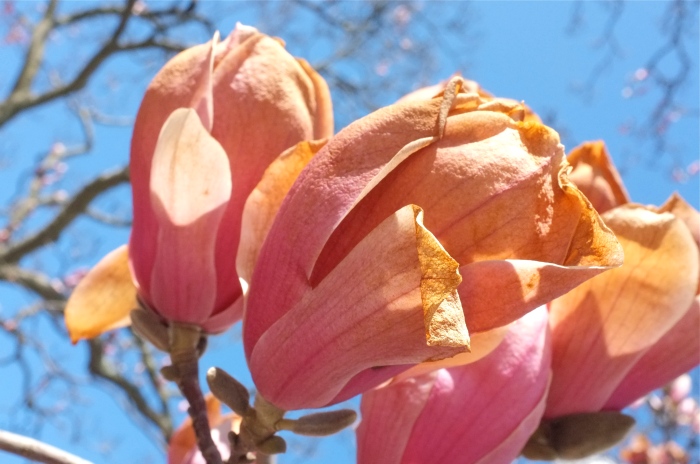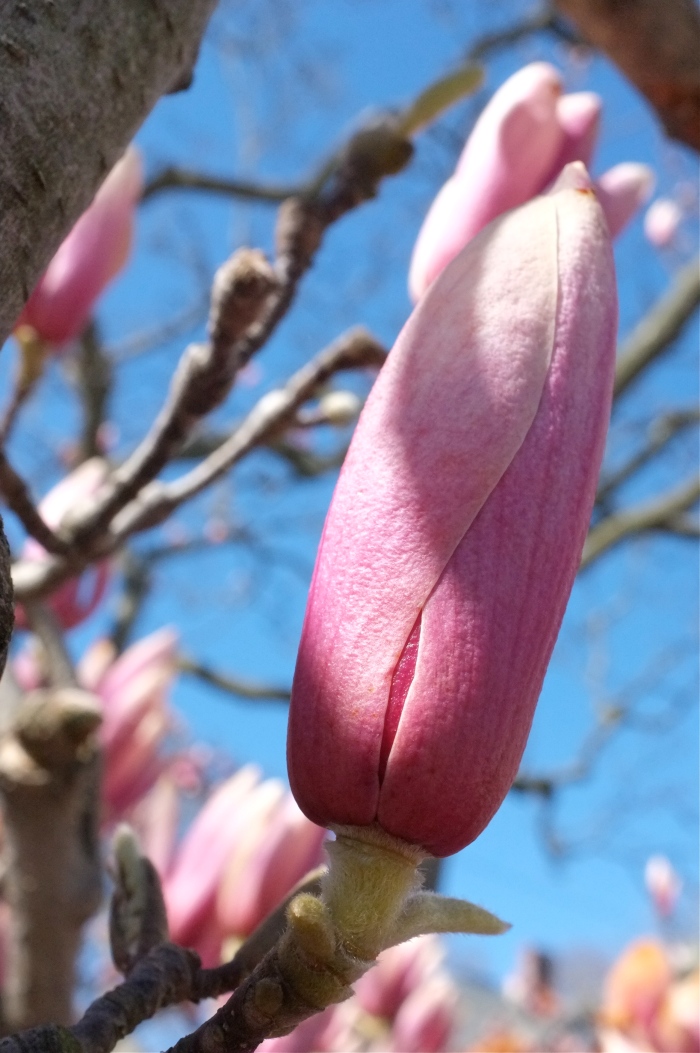 Yesterday while in Boston to meet with clients at their home on Comm. Ave, I couldn’t help but take a snapshot of the glorious saucer magnolias blooming along the avenue. I wished I’d had more time because just as I was leaving, the sun began to poke out. The stunning display that you see lining the south-facing side is the genius of one woman and when I have time, will write more about her brilliant accomplishment to which we are all the beneficiaries, more than fifty years after planting!
Yesterday while in Boston to meet with clients at their home on Comm. Ave, I couldn’t help but take a snapshot of the glorious saucer magnolias blooming along the avenue. I wished I’d had more time because just as I was leaving, the sun began to poke out. The stunning display that you see lining the south-facing side is the genius of one woman and when I have time, will write more about her brilliant accomplishment to which we are all the beneficiaries, more than fifty years after planting!
Magnolia soulangeana Commonwealth Avenue Boston
At the Gloucester HarborWalk Gardens, we planted two species of magnolia adjacent to each other. Many arboretums, such as Harvard’s Arnold Arboretum, plant several species within the same plant family in close proximity to provide an opportunity to learn by comparing the differences and similarities. I wanted our community to enjoy a mini-arboretum experience by planting two of the most beautiful magnolias that grow well in our region, the saucer magnolia (Magnolia x soulangeana) and sweetbay magnolia (M. virginiana). Stop by in the coming weeks to visit our gorgeous magnolias in bloom. M. soulangeana will bloom first, followed by M. virginiana.
The Friends of the HarborWalk will be back at the HarborWalk this Sunday (tomorrow morning), beginning at 9am. We’ll meet in front of the Gloucester House. Come lend a hand–its work, but fun with this growing great group of community-spirited friends. Everyone is welcome!
Please leave a comment in the comment section or feel free to contact me if you have any questions at kimsmithdesigns@hotmail.com.








